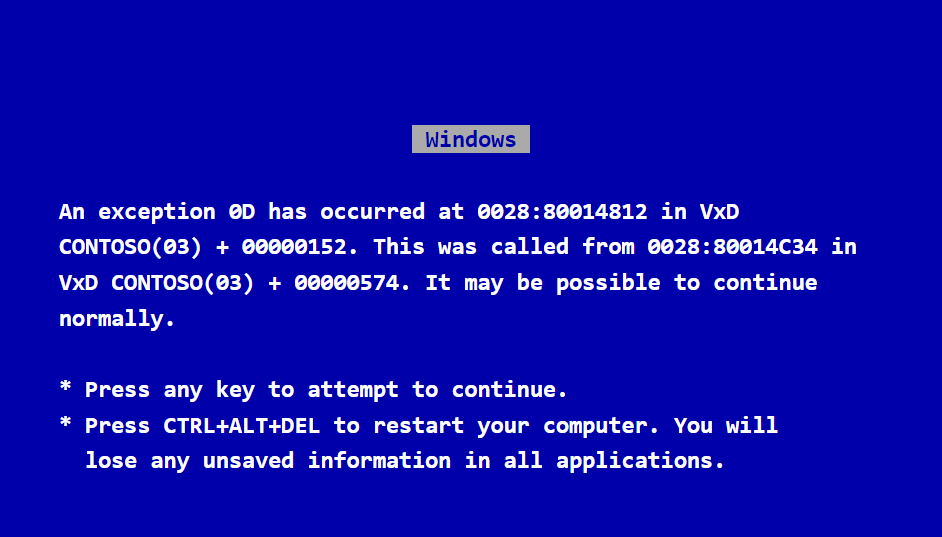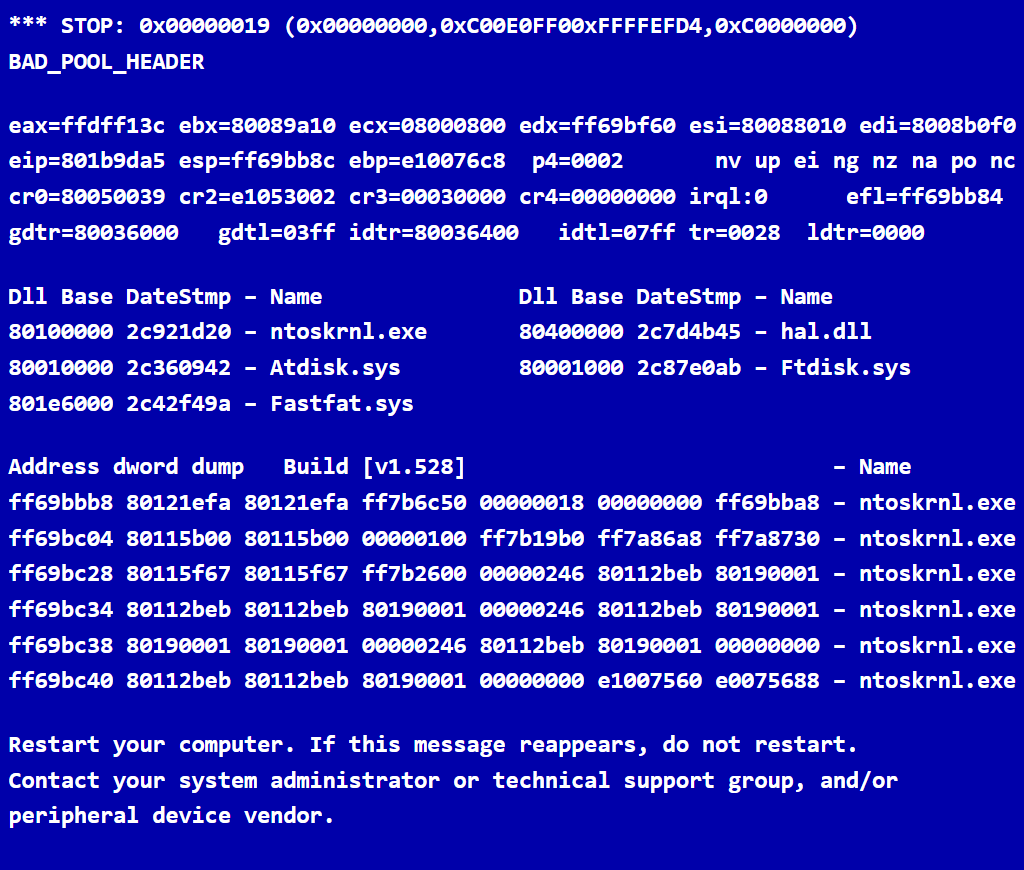Big reveal: For years, the identity of the person (or people) behind the infamous Blue Screen of Death in Windows has been a mystery. Who exactly wrote that gut-wrenching message that strikes terrible fear into the hearts of Windows users? One enlightened former Windows developer is setting the record straight.
It all started with a 2014 blog post by developer Raymond Chen that indicated former Microsoft CEO Steve Ballmer wrote the text for the Ctrl+Alt+Del screen in Windows 3.1. People read it wrong and started believing Ballmer wrote the text for the BSOD.
Now, Chen is clearing the record. In a recent blog post, he points out there are three different blue-colored error screens, each with a different author.
Let’s start with the Windows 3.1 Ctrl+Alt+Del screen, which Chen humorously calls the “blue screen of unhappiness.” He says the text for this message was written by Steve Ballmer, adding that Ballmer didn’t write the code to display the message, just the text that goes into the message.

Counterintuitively, Ballmer’s blue screen had nothing to the BSOD and did not even pop up during system crashes. Instead, it appeared when a user pressed Ctrl+Alt+Del and acted as a rudimentary task manager. When a system crash did happen on Windows 3.1, it initially just presented a blank black screen. Some Insiders may recall that Microsoft considered switching back to a black crash screen with Windows 11 before thankfully changing its mind.
The next trouble screen was for Windows 95 kernel errors. This one was also mistakenly called a BSOD. In reality, it didn’t result in “death” at all. Users could skip or ignore the error and return to their business, albeit at their own risk.
“I was the one who brought this version of the Windows 95 kernel error blue screen message to its final form,” Chen notes.

Finally, we come to the real BSOD – the Windows NT kernel error screen. This one was the handiwork of none other than John Vert. Chen calls it the “true blue screen of death” because, at this point, your system is well and truly “unrecoverably dead.”

Chen’s post is a fascinating glimpse into one of the most iconic (and dreaded) features of the Windows operating system. It’s become so ingrained in PC and popular culture that had Microsoft changed it to black, unaware users might have wondered what was happening. The change certainly would have made the recent CrowdStrike outage look a whole lot different.

